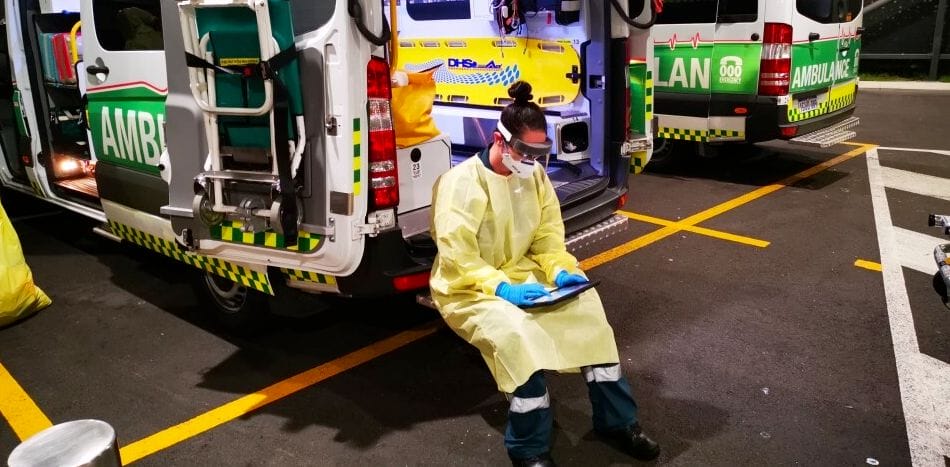Face to face with the enemy
Article by Paul Bailey
Medical Director at St John WA
The victors of war define history, but the story in which our ‘COVID kids’ are born into this year won’t be clear until this pandemic is fading in the rear view mirror.
Our community is confronting a marauding respiratory virus that is challenging our entire way of life. We are also confronting an unknown future and deep challenges to our community in terms of jobs, social interaction and the very fabric of our society. None of our systems have been set up to cope with this sudden, potentially catastrophic change in conditions or the high degree of uncertainty that accompanies those conditions.
As much of the world ponders an uncertain future, and many commentators in both traditional media outlets and social media channels voice strong, often invalid opinions, I thought there might be some interest in hearing from a voice directly linked to the front line.
My job as Medical Director of the largest ambulance service in the world – servicing a community spread over 2.5m sq kilometres, is now “virus” between the hours of 07:00 and 22:00 (on a good day) and I now work seven days a week. It is my privilege to serve my community and my organisation at this most difficult of times.
Urgently re-engineering a system in real time, on the fly
This is happening across the Health system, and indeed across the country. We are lucky in Australia in that we have been able to see this coming and learn from our colleagues overseas, although this has also led to a strong sense of foreboding. Emergency Departments are being reconfigured into “clean” (non COVID) and “dirty” (COVID) streams. All this without knowing when the Tsunami is going to hit, if at all. Maybe our extensive public health messaging and social distancing will work, maybe it won’t be a Tsunami but merely a ripple. Smart money is currently divided although all in health continue to prepare for the big one.
Intensive Care Units are working at methods to radically increase capacity, and in a Western Australian context, extend that capacity into the regions via telehealth. We are lucky to have one of the most extensive hospital telehealth systems in the world. The Health system in Western Australia is configured so that a very high percentage of intensive care beds are in the Perth metropolitan area, many hundreds of kilometres away (and in some cases many thousands of kilometres) from some members of our community.

For ambulance services generally, and ours in particular, there are several issues that need addressing simultaneously:
- The lessons from other services are that, in the early stages of the Pandemic, the key issue is frontline staff availability, either due to illness, mandatory quarantine, or more simple issues such as childcare. How does our service function with 10 per cent less capacity than normal, 20 per cent, or 40 per cent? How do we continue to provide for our community to the very best of our ability? We are planning for a variety of scenarios.
- Already we have seen procedures, both clinical and other, that during the normal course of business, abandoned during this marauding respiratory viral pandemic. Then there is the question of timing. Too late and front line staff are put at risk, too early and community members may be denied otherwise lifesaving treatments.
- This is as much as anything, a supply chain and logistics battle. If we just look at PPE – personal protective equipment – eye protection, gloves, masks and gowns – ensuring that front line staff have what they need, when they need is enormously challenging. International supply systems have not been built around the concept that the entire world could be having the same potentially catastrophic problem, essentially simultaneously, with both manufacturing supply chains and international transport systems severely restricted. Want something urgently – sure, we’ll get it to you in 6 weeks. Maybe.
- Changes in healthcare systems are largely designed to be very safe, well thought through and limited in scope at any given time. There’s traditionally been a large emphasis on getting things right prior to implementing change. That situation has been turned on its head with the emphasis now on speed and making a decision, rather than methodically being right all the time. How to communicate complex change in an organisation distributed around the clock, over 2.5 million square kilometres, to clinicians of a wide variety of backgrounds and training. We’re building that on the fly.
